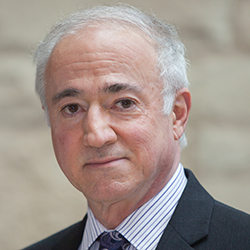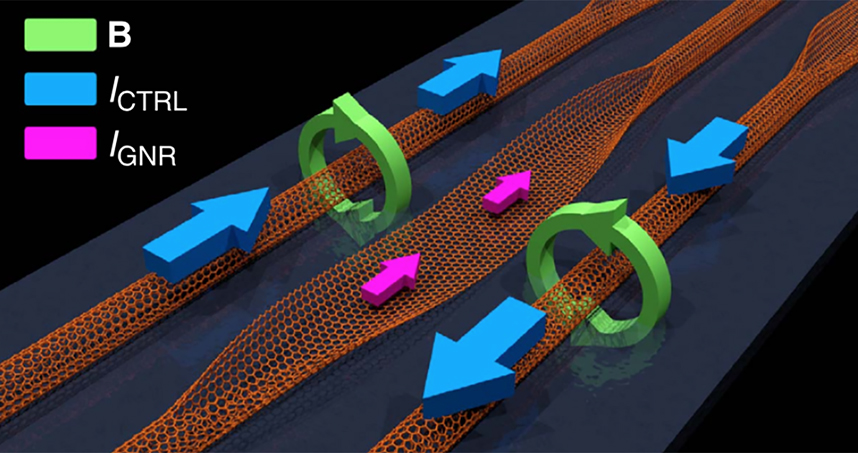Researchers Spin All-Carbon Computer Design
System could replace silicon transistors
Engineers at Northwestern Engineering and the University of Texas at Dallas have designed a novel computing system made solely from carbon. The system could potentially replace the silicon transistors that power today’s electronic devices.
“The concept brings together an assortment of existing nanoscale technologies and combines them in a new way,” said Joseph S. Friedman, assistant professor of electrical and computer engineering at the UT Dallas who conducted much of the research as a doctoral student in Northwestern’s McCormick School of Engineering.
The resulting all-carbon spin logic proposal is a computing system that Friedman believes could be made smaller than silicon transistors, with increased performance.
Partially supported by a Beckman Graduate Fellowship, the research was published this morning in Nature Communications. Northwestern Engineering’s Alan V. Sahakian, the John A. Dever Professor of Electrical Engineering and Computer Science, co-authored the paper and previously advised Friedman, the paper’s first author. McCormick professors Gokhan Memik, Hooman Mohseni, Allen Taflove, and Bruce W. Wessels also contributed to the paper along with Professor Jean-Pierre Leburton of the University of Illinois at Urbana-Champaign.
 “We have developed an approach to realizing computer logic circuits using carbon rather than silicon and exploiting magnetic rather than electric fields,” Sahakian said. “This concept could revolutionize the fabrication of the circuits used to make computers and move us past the limitations of current semiconductor technology to make much smaller and faster systems.”
“We have developed an approach to realizing computer logic circuits using carbon rather than silicon and exploiting magnetic rather than electric fields,” Sahakian said. “This concept could revolutionize the fabrication of the circuits used to make computers and move us past the limitations of current semiconductor technology to make much smaller and faster systems.”
Today’s electronic devices are powered by transistors, which are tiny silicon structures that rely on negatively charged electrons moving through the silicon, forming an electric current. Transistors behave like switches, turning current on and off.
In addition to carrying a charge, electrons have another property called spin, which relates to their magnetic properties. In recent years, engineers have been investigating ways to exploit the spin characteristics of electrons to create a new class of transistors and devices called “spintronics.”
Friedman’s all-carbon, spintronic switch functions as a logic gate that relies on a basic tenet of electromagnetics: As an electric current moves through a wire, it creates a magnetic field that wraps around the wire. In addition, a magnetic field near a two-dimensional ribbon of carbon — called a graphene nanoribbon — affects the current flowing through the ribbon. In traditional, silicon-based computers, transistors cannot exploit this phenomenon. Instead, they are connected to one another by wires. The output from one transistor is connected by a wire to the input for the next transistor, and so on in a cascading fashion.
In Friedman’s spintronic circuit design, electrons moving through carbon nanotubes — essentially tiny wires composed of carbon — create a magnetic field that affects the flow of current in a nearby graphene nanoribbon, providing cascaded logic gates that are not physically connected.
Because the communication between each of the graphene nanoribbons takes place via an electromagnetic wave, instead of the physical movement of electrons, Friedman expects that communication will be much faster, with the potential for terahertz clock speeds. In addition, these carbon materials can be made smaller than silicon-based transistors, which are nearing their size limit due to silicon’s limited material properties.
While the concept is still on the drawing board, Friedman said work toward a prototype of the all-carbon, cascaded spintronic computing system will continue in the interdisciplinary NanoSpinCompute research laboratory, which he directs at UT Dallas.
